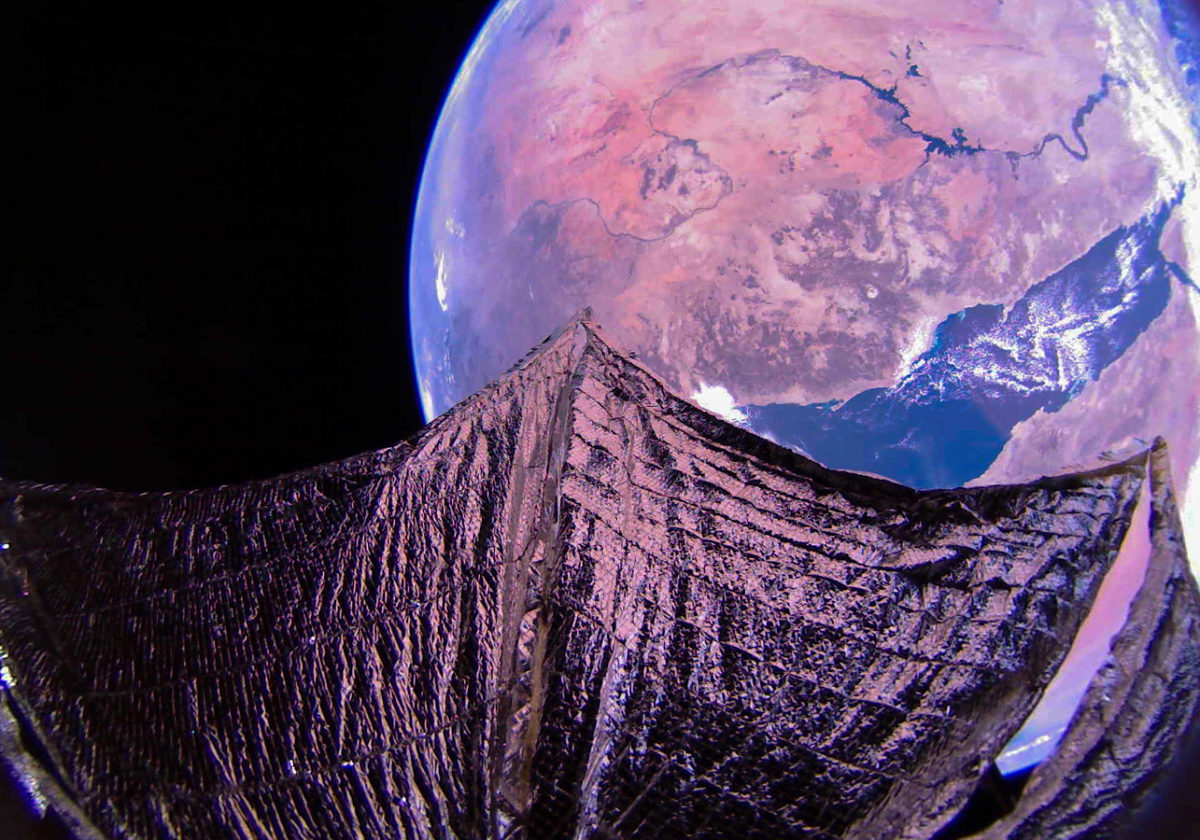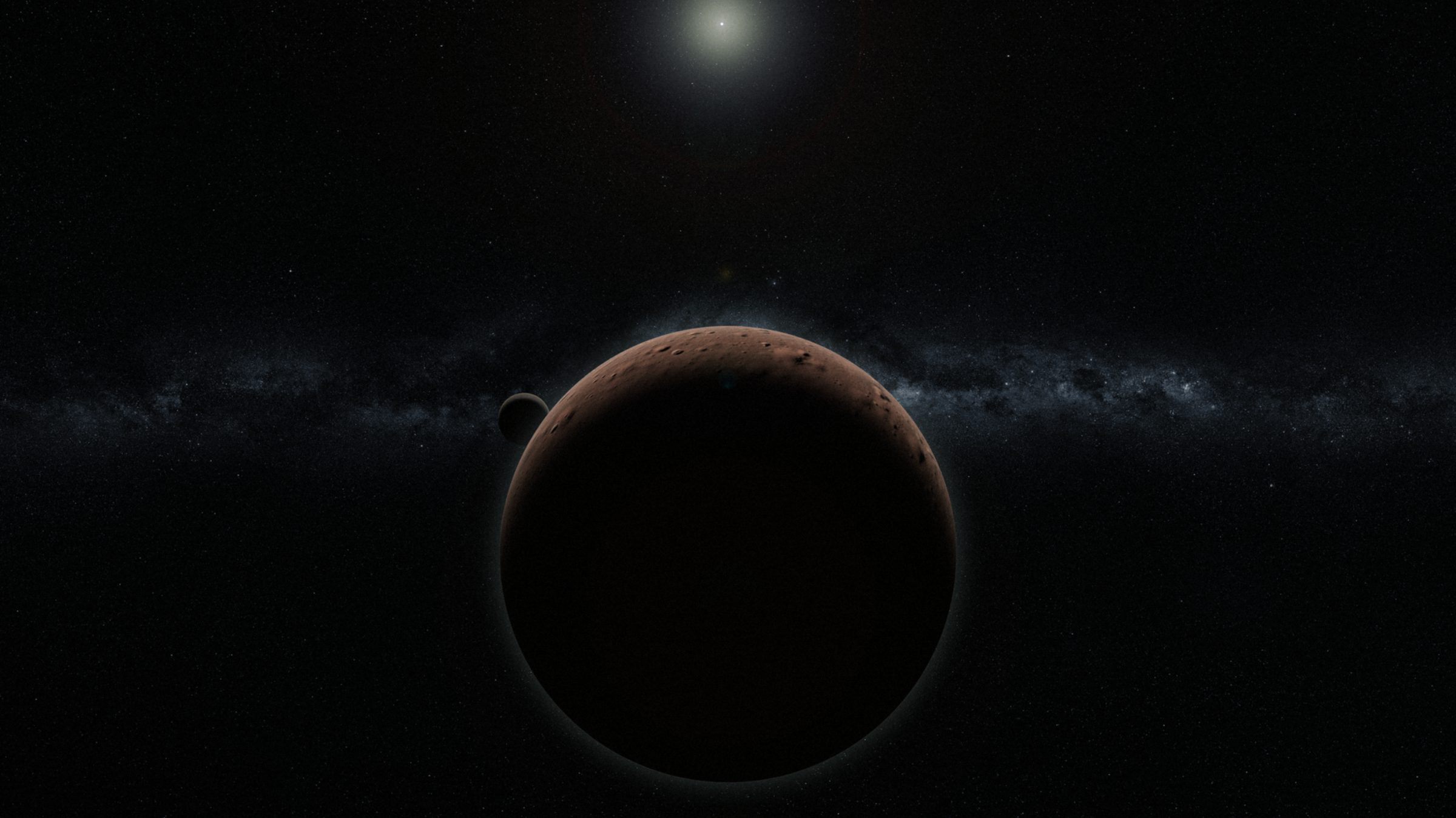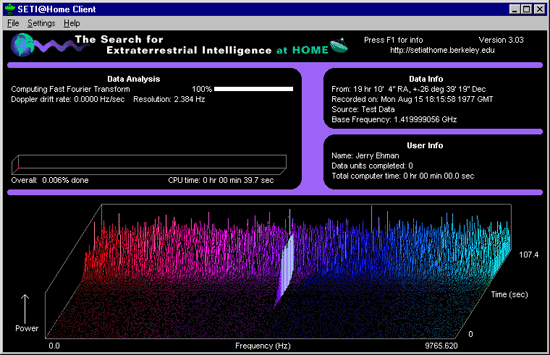Your Impact: June 2020 Solstice
The 2020 Day of Action

In early February, 115 Planetary Society members from 28 different states came together in Washington, D.C. for our annual Day of Action. Backed by tens of thousands of members worldwide, these advocates met with their representatives in Congress to speak in support of space science and exploration.
Over the course of one busy day, Planetary Society members had 161 meetings with con- gressional offices. They asked their elected leaders to embrace the search for life as a core motivation for exploration, to extend human presence into deep space, and to defend Earth from asteroid impacts. They knew these key messages well, having trained hard in the lead-up to their meetings.
Educating our members is an important part of our effort to empower the world’s citizens as space advocates. Day of Action participants took full advantage of The Planetary Society’s free, online educational resources, learning how NASA’s budget is decided, familiarizing themselves with the rationales for our advocacy priorities, and learning how to be effective when advocating for space. When they arrived in Washington, they dove deeper into their preparation in a day-long training session where they got com- fortable with their messaging and practiced their arguments.
For the first time, this year’s Day of Action also included a remote component. Informed by the same educational resources, hundreds of Planetary Society members took action from home by emailing and phoning their representatives in government and by sharing key advocacy messages on social media. The Planetary Society is able to train and equip our members to take action like this because of the support of members like you. This was our biggest Day of Action ever, and we’ll only keep growing it from here.
SETI@home
The University of California at Berkeley has announced the end of SETI@home, one of the largest citizen science projects ever undertaken. This project engaged ordinary people to contribute their personal computers’ processing power to help analyze the masses of data involved in the search for extraterres- trial intelligence (SETI). Since 1999, millions of people have used the free SETI@home software to download and analyze radio telescope data to look for any sign of a signal that might be coming from the technological activities of intelligent beings light years away.
This project was made possible because of support from The Planetary Society’s members. In 1998, 2 researchers from U.C. Berkeley (computer scientist David Anderson and SETI scientist Dan Werthimer) approached The Planetary Society with the novel idea of harnessing the enormous computing power of personal com- puters, which numbered in the millions and spent much of their time idle. For more than a year, they tried to raise money for their idea, approaching numerous companies in nearby Silicon Valley but coming up empty. The idea of involving the public in scientific research was a novel one, and the Silicon Valley vision- aries found it difficult to believe that many people would lend their personal computers to a SETI search.
The Planetary Society reacted differently. SETI was in the Society’s DNA from the very beginning, and public involvement in science was at the core of our mission. SETI@home, which combines the two, seemed perfect. With the support of our members, we raised $50,000 to help launch the project and secured a matching donation from Para- mount Pictures, which was promoting its Star Trek movie franchise. SETI@home was off and running.
SETI@home went online on 17 May 1999 and was an immediate and unprecedented hit. Within a few months, more than a million people across the globe were processing work units on their personal computers, and within a year, the number was approaching 2 million. No one had expected this explosive growth, least of all Anderson and Werthimer, who had dreamed of recruiting perhaps 100,000 people. With SETI@home, the search for extraterrestrial intelligence had captured the public’s imagination.
SETI@home did something else as well, something that no one expected: it launched a radically new way of doing science. The project’s explosive success opened scientists’ eyes to the fact that the public is eager to take part in cutting-edge scientific research and is happy to donate their computers and other resources for the cause. So, where SETI@home first tread, a long line of scientific projects has followed, each engaging the public in different and creative ways. Today, the public is invited to take part in studies of climate change, cancer cells, protein folding, gravity waves, interstellar dust particles, and many, many others. Thanks to SETI@home, researchers have begun to tap into the almost-unlimited resource of public enthusiasm for science.
Although SETI@home is ending, its legacy lives on. The Planetary Society is proud to have been a part of this project, and we thank our members for helping to launch a new era of public engagement in science.
LightSail 2 Enters Extended Mission Phase

On 25 June 2020, after 1 year in orbit, The Planetary Society’s LightSail 2 spacecraft will complete its primary mission phase and will enter an extended mission phase. During its primary mission, LightSail 2 achieved its goals of demonstrating for the first time controlled solar sailing in a small spacecraft, raising the profile of solar sailing in the technical community and with the public as well as building excitement and engaging the public in space exploration.
As expected, the spacecraft will gradually lower due to atmospheric drag, with an expected reentry into Earth’s atmosphere after many months of extended operations.
You can continue to follow the LightSail 2 mission at sail.planetary.org.
LightSail 2 Extended Mission Objectives
- Continue to tune solar sailing performance
- Learn more about solar sailing operation through the study of various operational refinements and the study of spacecraft orbital evolution
- Continue taking pictures for public outreach and engineering analyses
- Implement deorbit studies of sail dynamics with the sail acting as a drag sail
- Test software that can automatically analyze engineering data and highlight potential errors
- Continue to share information about the mission and what we are learning from it with the technical community and the public through peer-reviewed journal articles, conference presentations, direct contact with future solar sailing missions, web articles, and social media
Naming a World

When an object is discovered in space, it is first assigned a rather uninspiring and technical name. Such was the case for 2007 OR10, a Kuiper Belt object discovered in 2007. A reddish, cold object slightly larger than Pluto’s moon Charon, 2007 OR10 is considered a minor planet. It even has its own moon.
Its discoverers—astronomers Meg Schwamb, Mike Brown, and David Rabinowitz—wanted to give it a real name, something unique and meaningful. In 2019, they reached out to The Planetary Society to help. They had chosen 3 potential names associated with mythological creatures and figures that reflect aspects of 2007 OR10’s physical properties, and we asked the public to vote on their favorite.
More than 280,000 votes were cast, and the winner emerged: Gonggong, named after a Chinese water god with red hair and a serpent-like tail, known for creating chaos, causing flooding, and tilting Earth.
In February 2020, the International Astronomical Union made it official: Gonggong is now a part of our solar system’s family.
Whether you participated in the naming contest or are just hearing about Gonggong for the first time, there is much to anticipate as we continue to study this fascinating world.
Support our core enterprises
Your support powers our mission to explore worlds, find life, and defend Earth. You make all the difference when you make a gift. Give today!
DonateThe Planetary Report • June Solstice
Help advance space science and exploration! Become a member of The Planetary Society and you'll receive the full PDF and print versions of The Planetary Report.


 Explore Worlds
Explore Worlds Find Life
Find Life Defend Earth
Defend Earth



